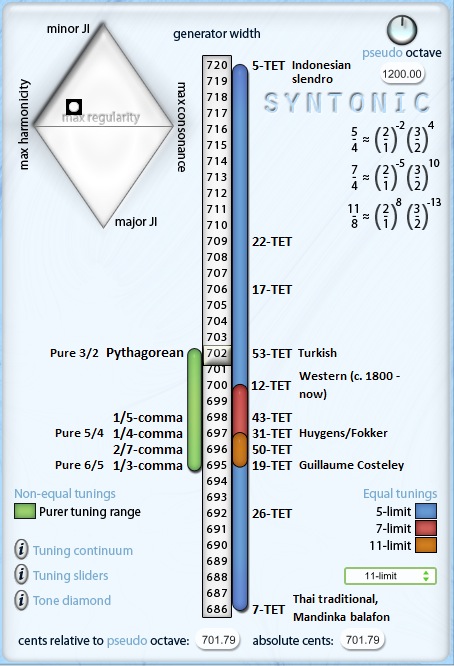

Diatonic Scale StepsIn the same way that the tuning of triads changes according to the position of the tuning slider, so does the tuning of the scales in which these triads are embedded. For example, the recognisable diatonic scale contains five large steps (major seconds) and two small steps (minor seconds) in the characteristic pattern LLSLLLS. Assuming a pure octave of 1200 cents:
The above tuning range of 685.71 to 720 cents is called the 5-limit ordinal tuning range of the syntonic continuum, and it is the tuning range over which this particular scale form (the seven-note diatonic) is recognisably diatonic because they consist of five large steps evenly interspersed by two small steps. Within this range there are many useful tunings such as the purer-tunings (indicated on the left of the tuning slider) and many notable equal temperaments (indicated on the right of the slider). Each of the above tunings can be explored by setting the tuning slider to the relevant n-TET positions indicated to the right of the Syntonic slider. For extreme tunings like 7-TET and 5-TET at the ends of the slider, it is advisable to set the tone diamond to its right-most position. 
|
©2008 William Sethares; site design by Anthony Prechtl |